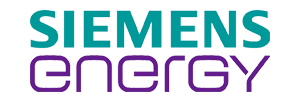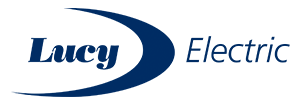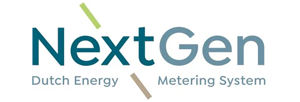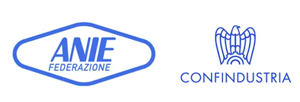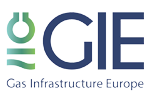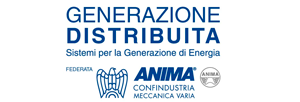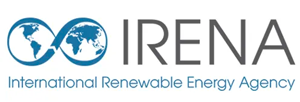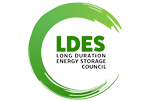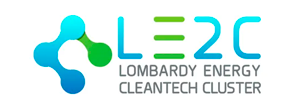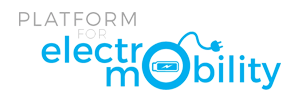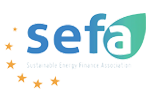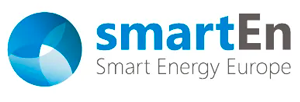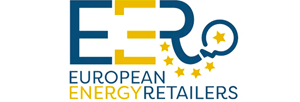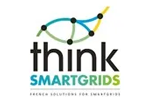Long Duration Energy Storage
)
- Event: Enlit Europe 2024
- Date: 23rd October 2024
- Estimated Read Time: 8-10 minutes
Quick Summary:
At Enlit Europe 2024, a high-level panel led by Orian Bani explored the urgent need for long duration energy storage (LDES) to support the EU’s net-zero targets and energy resilience. Speakers highlighted that while renewable generation is growing, without effective storage, grid instability and wasted energy will follow. Discussions covered regulatory barriers, such as inconsistent national policies and double taxation, as well as commercial innovations like Hydrostor’s A-CAES and Caldera’s thermal storage for industry. The panel called for clear targets, supportive frameworks, and fair market access to unlock investment—framing LDES not as a subsidy burden, but as critical infrastructure for Europe’s energy future.
Watch the video or read the article below:
Introduction: Long Duration Energy Storage Comes into Focus
At Enlit Europe 2024, the session on Long Duration Energy Storage (LDES) brought together an impressive panel of experts and innovators to shine a critical spotlight on one of the most overlooked—but crucial—facets of the energy transition. As the European Union races toward its 2050 net-zero targets, the growing importance of long duration energy storage is becoming impossible to ignore. Moderated by Orian Bani, Head of Policy at the Brussels-based Energy Storage Coalition, the session dissected the political, regulatory, and technological dimensions of building scalable, market-ready long duration energy storage solutions.
Kicking things off, Bani situates the conversation within a sobering, if hopeful, context: 75% of the EU’s greenhouse gas emissions are energy-related, and radical transformation is needed not only to meet 2050 climate targets, but also to ensure energy security, price stability, and resilience across Europe’s energy systems.
The goal is not just more renewables—but a system capable of absorbing their variability. That’s where LDES comes in.
Speakers included:
- Garge Bja (Trinomics Energy Policy Consultant)
- Sarah Griffiths (VP of Government and Regulatory Affairs, Hydrostor)
- Marina Erdi (Head of Innovation, Enel Green Power)
- Andy Jones (Director of Industrial Business Development, Caldera)
This blog explores the critical talking points and insights that emerged from the deep-dive discussion.
Why LDES Is No Longer Optional
From the outset, Bani underscored that the EU’s climate neutrality targets mean a monumental shift in how energy is generated, stored, and distributed. Renewable energy’s rise has been phenomenal—but has now hit a paradox. Peaks in generation often coincide with ultra-low or even negative electricity prices, straining grid stability and creating costly curtailments.
“The challenge isn’t getting more generation online—it’s what we do with it when the sun’s not shining or the wind isn’t blowing,” Bani said.
That’s the value proposition of long-duration storage: capturing excess renewable energy and dispatching it when needed over extended periods, typically eight hours or more. It's not just a climate imperative—it’s a linchpin in Europe’s energy resilience and industrial competitiveness.
Systemic Regulatory Friction: An EU-Level and National Problem
Garge Bja presented a sobering overview of the regulatory landscape in the EU. Drawing on original research and stakeholder feedback, Bja outlined a series of roadblocks stifling LDES deployment—many of which stem from an underdeveloped energy storage policy EU stakeholders are still in the process of refining.
Key issues include:
- Lack of National Targets and Strategy
Most EU countries have not set dedicated LDES targets or created coherent integration strategies. While storage is referenced in climate and energy plans, detailed roadmaps are either missing or vague.
-
Incomplete or Inconsistent Legal Definitions
Despite EU legislation requiring member states to define energy storage in line with a 2019 electricity directive, many countries have yet to align. In some jurisdictions, storage is penalised with grid fees and taxes meant for both producers and consumers, undermining viability. - Double Taxation and Grid Tariffs
Without a proper legal framework, storage assets often face double grid charges—levies on both charge and discharge—further weakening the business case.
-
Ambiguous Role of Network Operators
Should TSOs and DSOs own storage? While their involvement can fast-track deployment, there’s political and regulatory resistance based on fears of monopolisation. -
Complex Permitting
From sluggish approval processes to a lack of national guidelines, permitting remains one of the largest practical barriers, particularly for novel or site-dependent technologies like thermal or gravitational storage.
The gap between regulation and market readiness is especially vast for long-duration technologies, which often require large upfront investments with long ROI timelines. According to Bja, the EU has provided a reasonable regulatory foundation, but member states must step up to implement and refine the energy storage policy EU framework. Otherwise, critical investment timelines could be missed.
Commercial Innovation: Hydrostor Pitches a Proven Solution
Sarah Griffiths of Hydrostor offered a commercial counterpoint by showcasing a functioning LDES technology already seeing traction worldwide: advanced compressed air energy storage (A-CAES). Hydrostor, a Canada-based firm, has spent over a decade modernising this legacy technology to eliminate emissions and improve scalability.
Instead of relying on fossil fuels like traditional compressed air systems, Hydrostor stores the heat generated during compression in thermal spheres, allowing for emissions-free re-expansion to generate power. Additionally, their adaptation stores air in hard rock caverns rather than traditional salt domes, massively increasing geo-flexibility.
Hydrostor’s current pipeline includes:
- Broken Hill, Australia: A 200 MW, 8-hour facility replacing diesel backup in a remote mining town. The contract is built around non-wires alternatives, removing the need for expensive new transmission lines.
- Kern County, California: Supported under California’s resource adequacy program, this project provides full capacity support with early-stage endorsement from environmental NGOs favouring it over lithium-ion and pumped hydro solutions.
Griffiths summed up Hydrostor’s appeal simply: “We can do what a gas plant does—without the emissions—with added flexibility.”
Her prescription for broader adoption included:
- Firm targets and signals from governments or grid operators
- Transparent, technology-agnostic procurement (avoid picking winners too early)
- Bankable commercial pathways, such as cap-and-floor models or long-term PPAs
Innovation at Scale: Enel Explores a Broader Tech Portfolio
Marina Erdi of Enel Green Power zoomed out to cover the full scope of future-ready storage technologies, arguing for greater diversity in Europe’s LDES ecosystem. While lithium-ion batteries dominate today and will remain vital for short-term balancing, Erdi advocated for developing longer-duration and more sustainable alternatives as part of the broader long duration energy storage framework.
Emerging technologies of note:
- Flow batteries (e.g., vanadium-based): Tested at Enel sites in Spain, these offer scalability and non-reliance on critical materials.
- Alternative electrochemical models: Zinc, sodium, and nickel solutions can offer cost stability and safety benefits.
- Electromechanical storage: Including gravitational systems or liquefied CO₂-based solutions.
However, Erdi was quick to reinforce that maturity and time-to-market vary widely. Successful uptake will require:
- Market frameworks that reward innovation and non-lithium solutions
- Clear permitting pathways, particularly for site-restricted assets like gravitational storage
- Capacity mechanisms that value flexibility and long-term shifting, not just peak time capacity filling
Her experience with national subsidy schemes was also telling: Greece’s scheme favours short-duration lithium deployments, while Italy and the UK are making room for pilot-scale innovation within public tenders.
“If we want to diversify our portfolio and future-proof our storage mix, we need supportive frameworks that value sustainability, lifecycle gains and system integration,” Erdi urged.
Heat Meets Grid: Caldera's Thermal Storage Solution
Rounding out the panel, Andy Jones from Caldera focused not on grid-scale power, but industrial decarbonisation.
Caldera’s pitch: thermal storage using volcanic rock and recycled aluminium as heat retention mediums—a solution targeting industrial heat generation below 200°C, which accounts for almost half of industrial heat demand globally.
Why it matters:
- Gas remains cheap, but decarbonising industrial heat remains essential for reaching climate goals.
- Caldera's modular system captures surplus renewable electricity, stores it as heat during low-price periods, and dispatches it as hot water, steam, or thermal oil when needed.
- Unlike volatile lithium markets, Caldera’s core raw materials are affordable and non-strategic—scrap metal and volcanic rock.
Jones argued that with access to more flexible tariffs and policy support, industrial installations could represent one of the largest near-term deployment opportunities for long duration energy storage.
“Industrial clients have the capital—they’re just not spending it yet because the business case fails under current electricity pricing structures,” he noted.
Jones challenged regulators to permit access to wholesale electricity prices and variable tariffs: “Let users get the renewable power directly—when the price is right, investment in storage will follow.”
The Collective Call: What Needs to Happen Next?
The session concluded with a forward-looking provocation: If each panellist had one Christmas wish to accelerate LDES deployment, what would it be?
Key messages:
- “Establish clear targets for long-duration storage.” – Sarah Griffiths
- “Accelerate innovation through supportive regulatory frameworks.” – Marina Erdi
- “Unlock access to low-cost energy; the investment will follow.” – Andy Jones
- “Shift mindsets—storage isn’t subsidy; it’s system value.” – Garge Bja
Moderator Bani added a broader policy point—that the EU’s regulatory foundation is strong, but national implementation is sorely lacking. From NECPs (National Energy and Climate Plans) to permitting reforms, countries need to translate EU-level commitment into concrete action through integrated energy storage policy EU efforts.
Final Thoughts: LDES as an Economic and Climate Catalyst
Across all perspectives, one reality stood undeniable: long duration energy storage is no longer a nice-to-have; it is foundational to a clean, flexible, and resilient energy system.
Whether it’s electrons or heat, batteries or compressed air, startups or utilities, these technologies are ready to meet tomorrow’s demand—if today’s market frameworks let them compete on fair terms. As advanced solutions like compressed air energy storage scale globally, Europe must create unified frameworks to avoid falling behind.
“There’s no silver bullet,” Bani concluded. “But we don’t need one—we need a silver toolkit. And long-term storage is a central piece of it.”
JOIN US IN 2025: BOOK YOUR PASS












